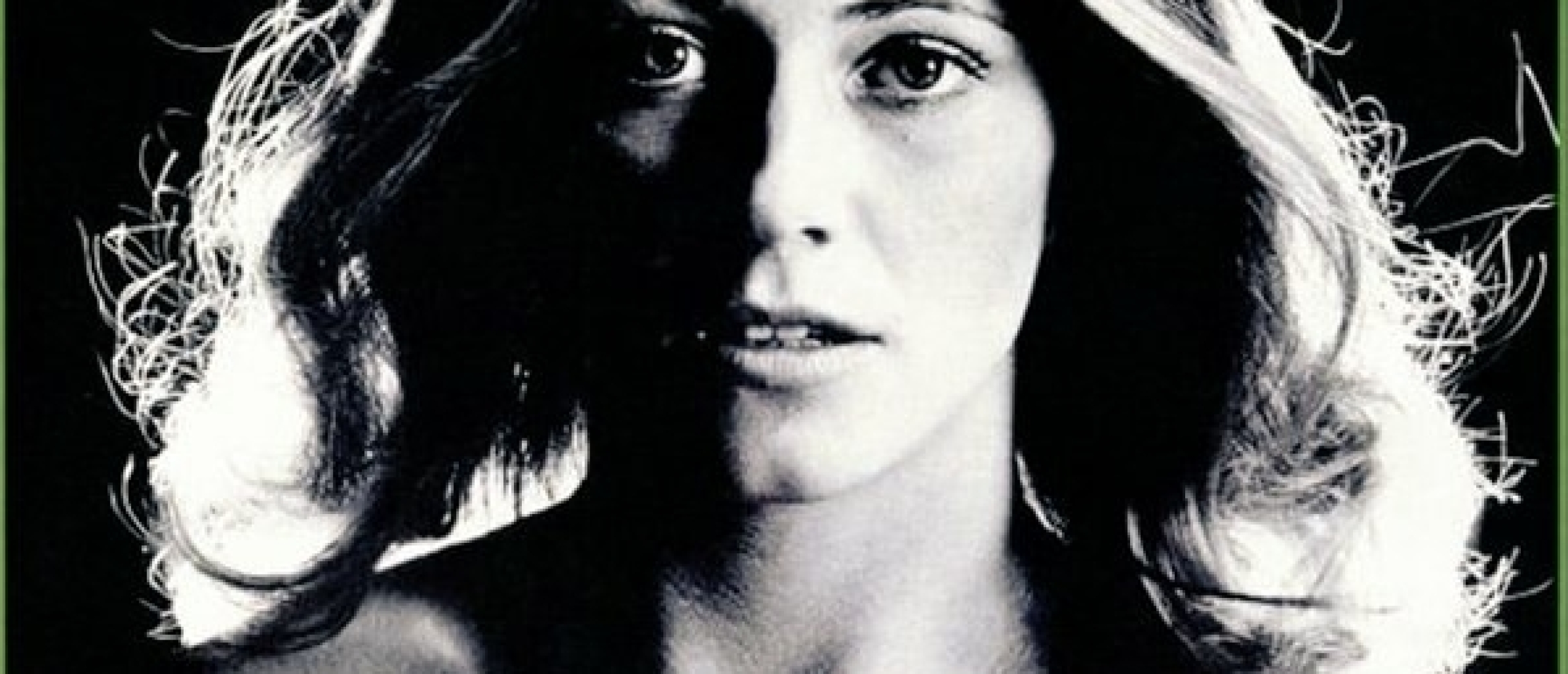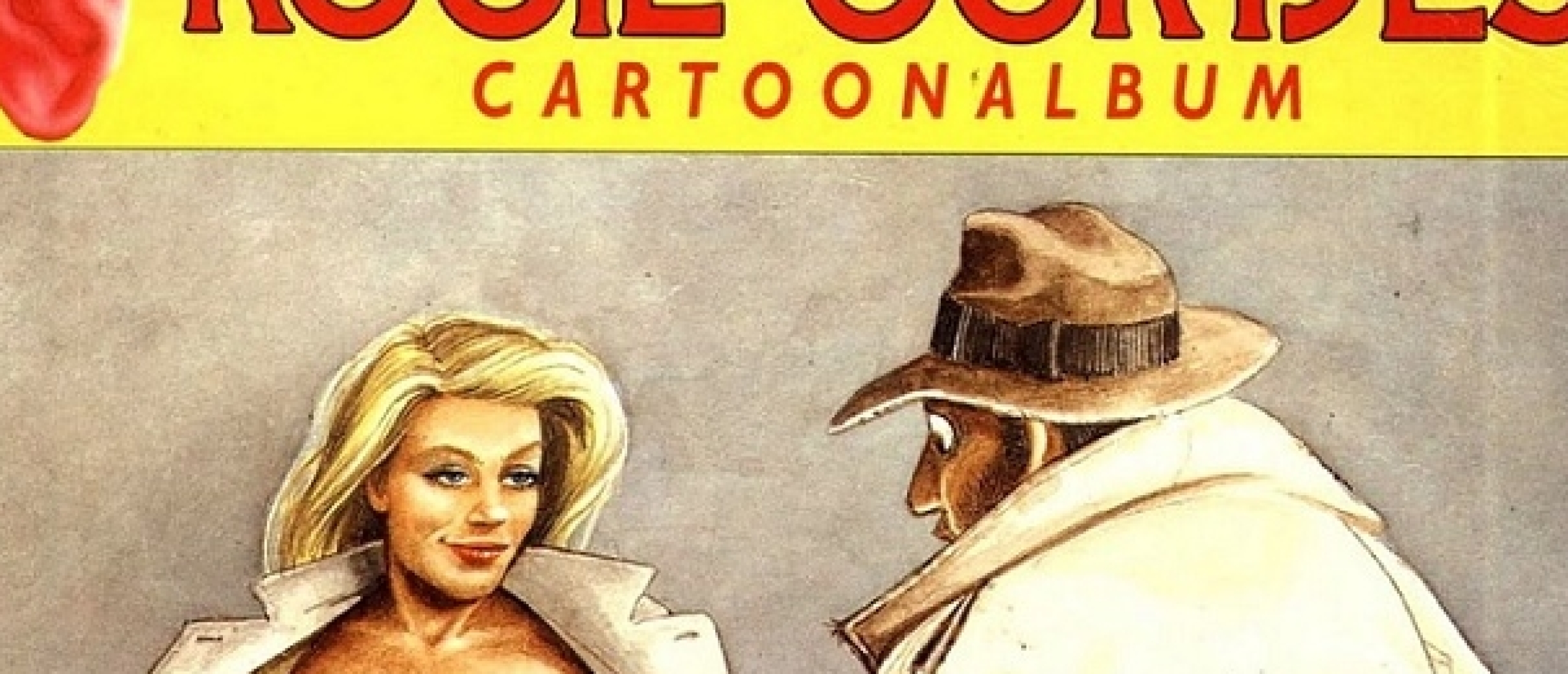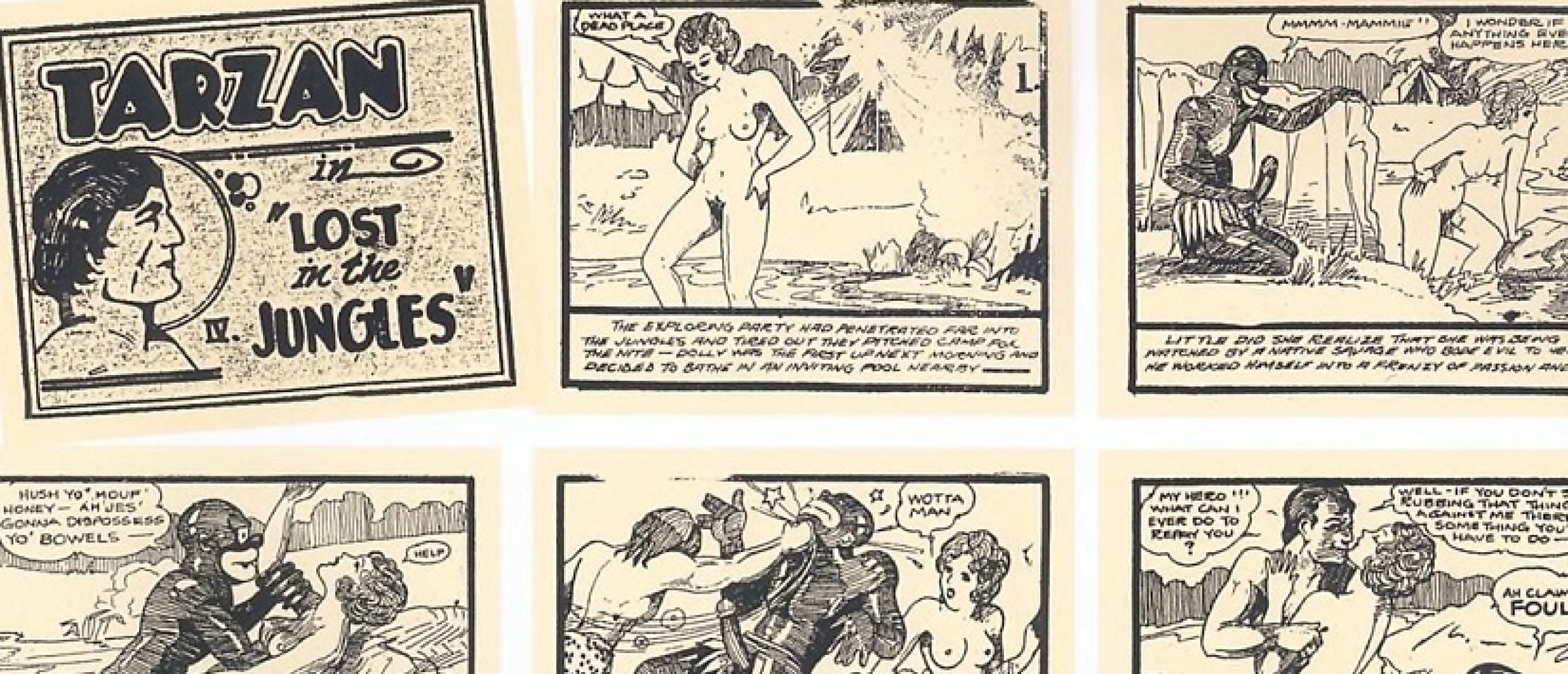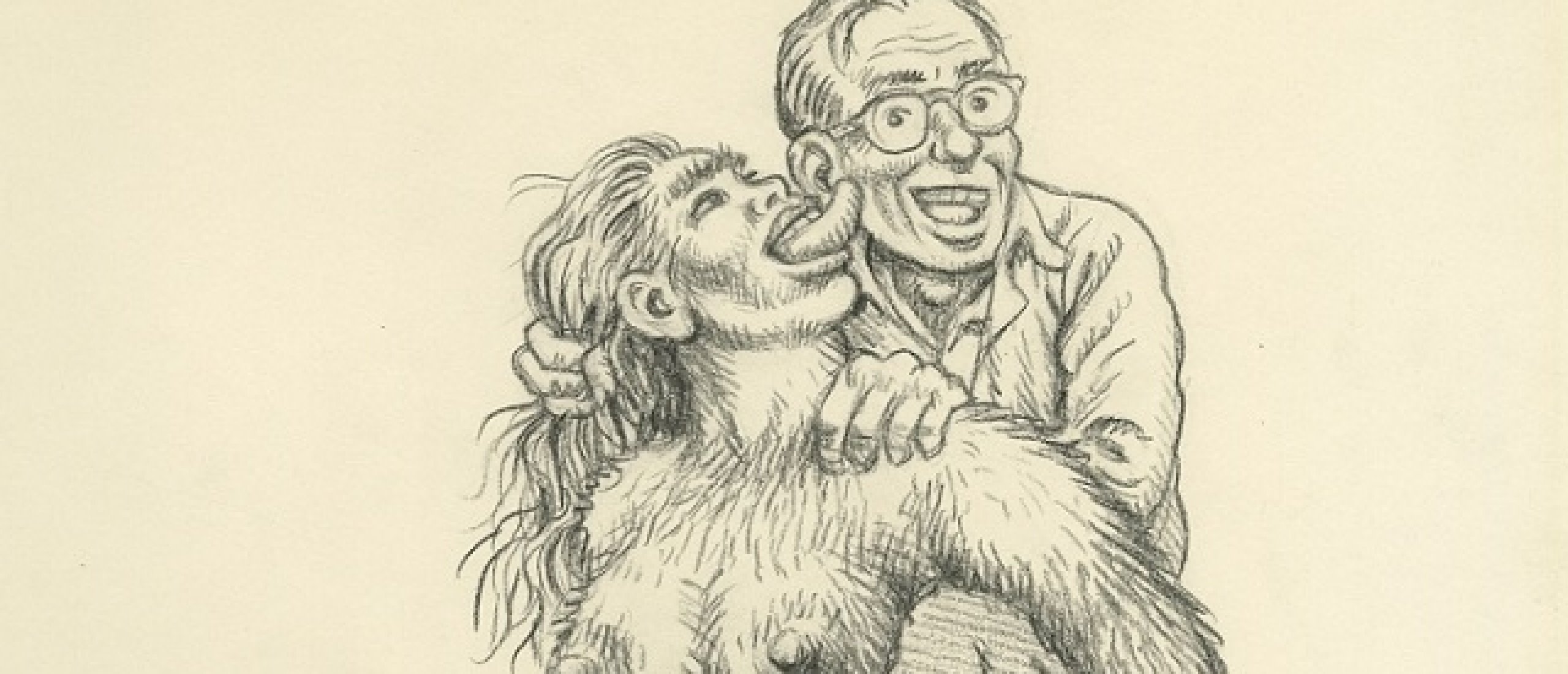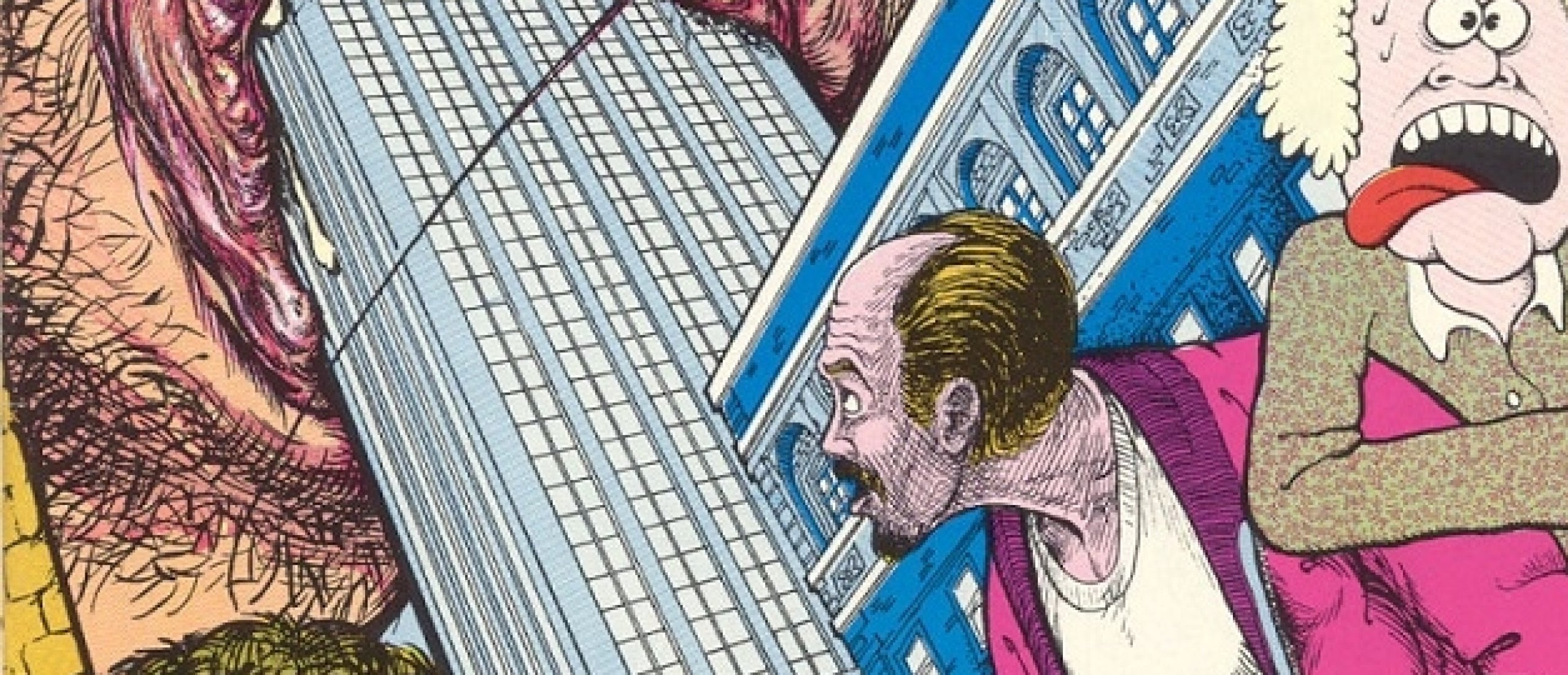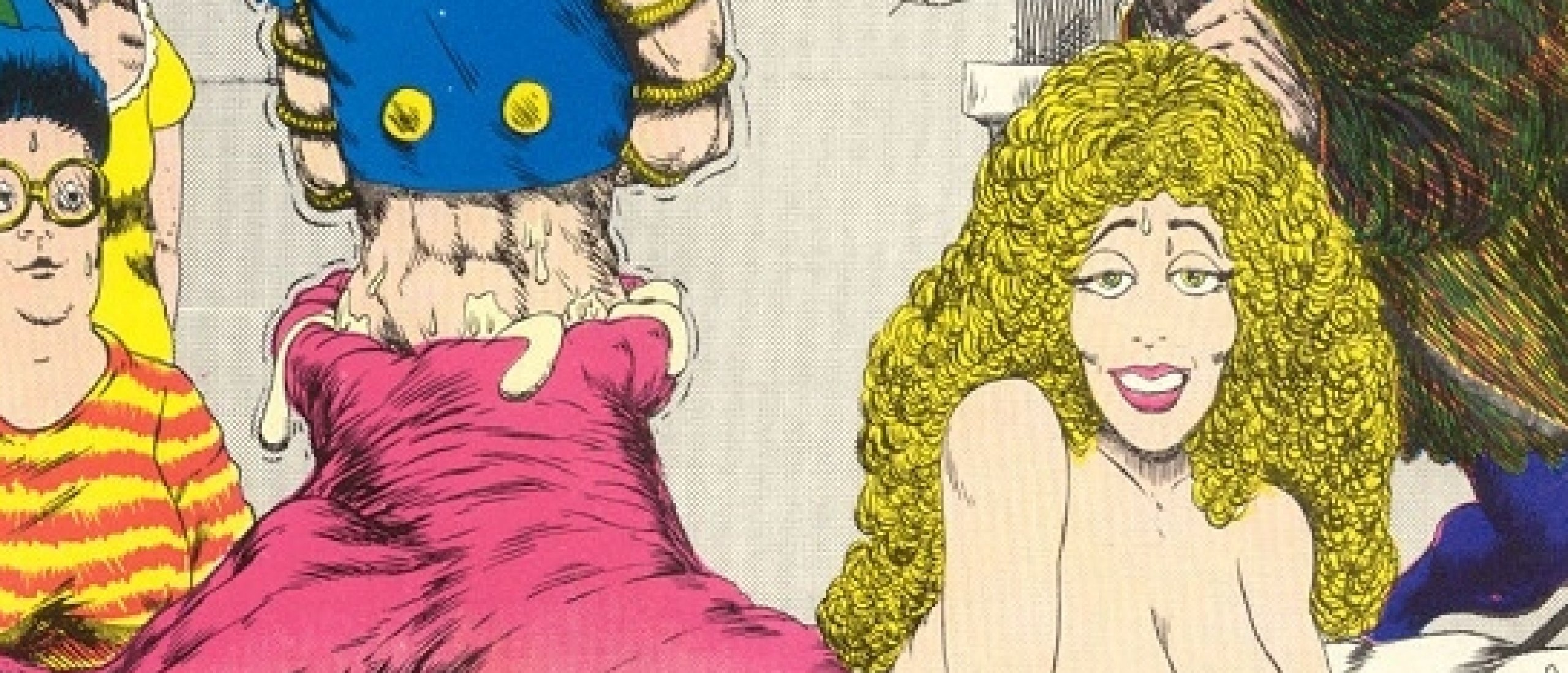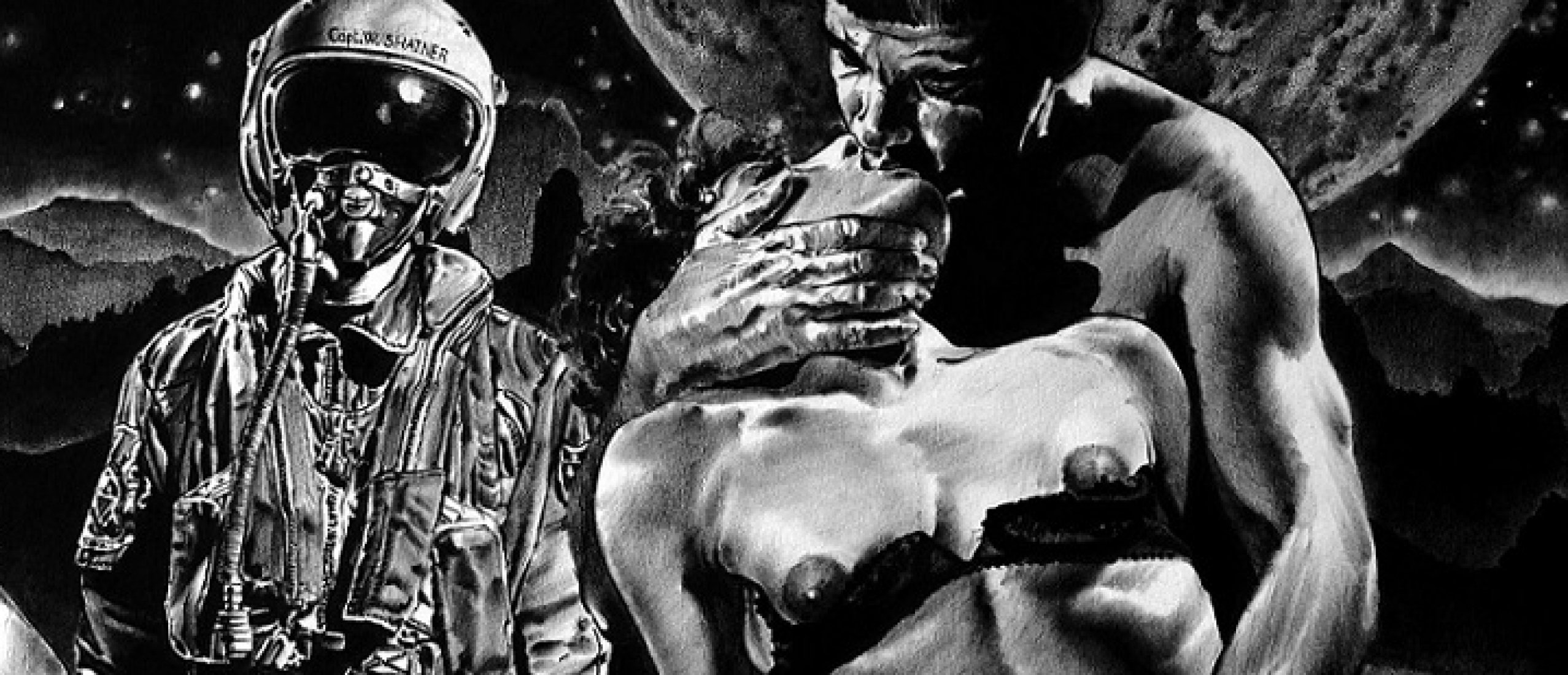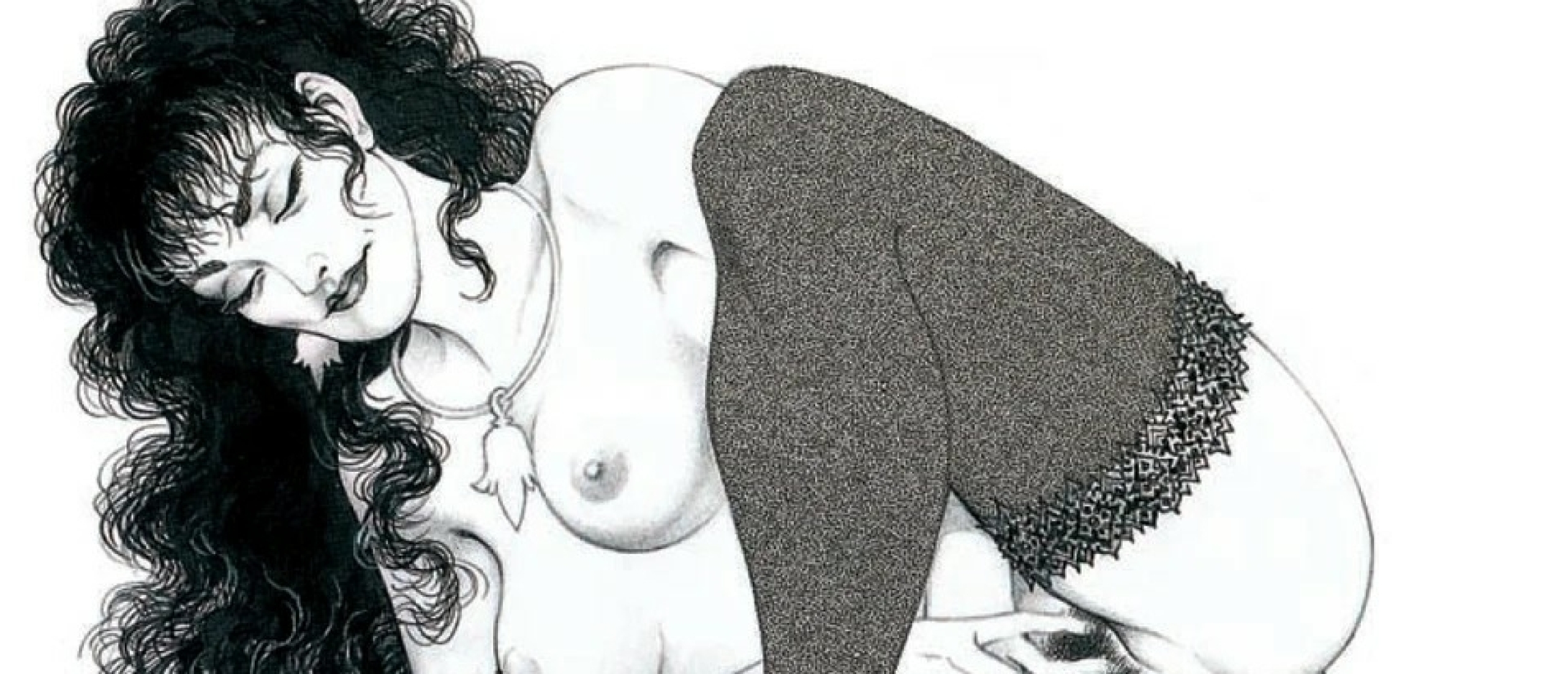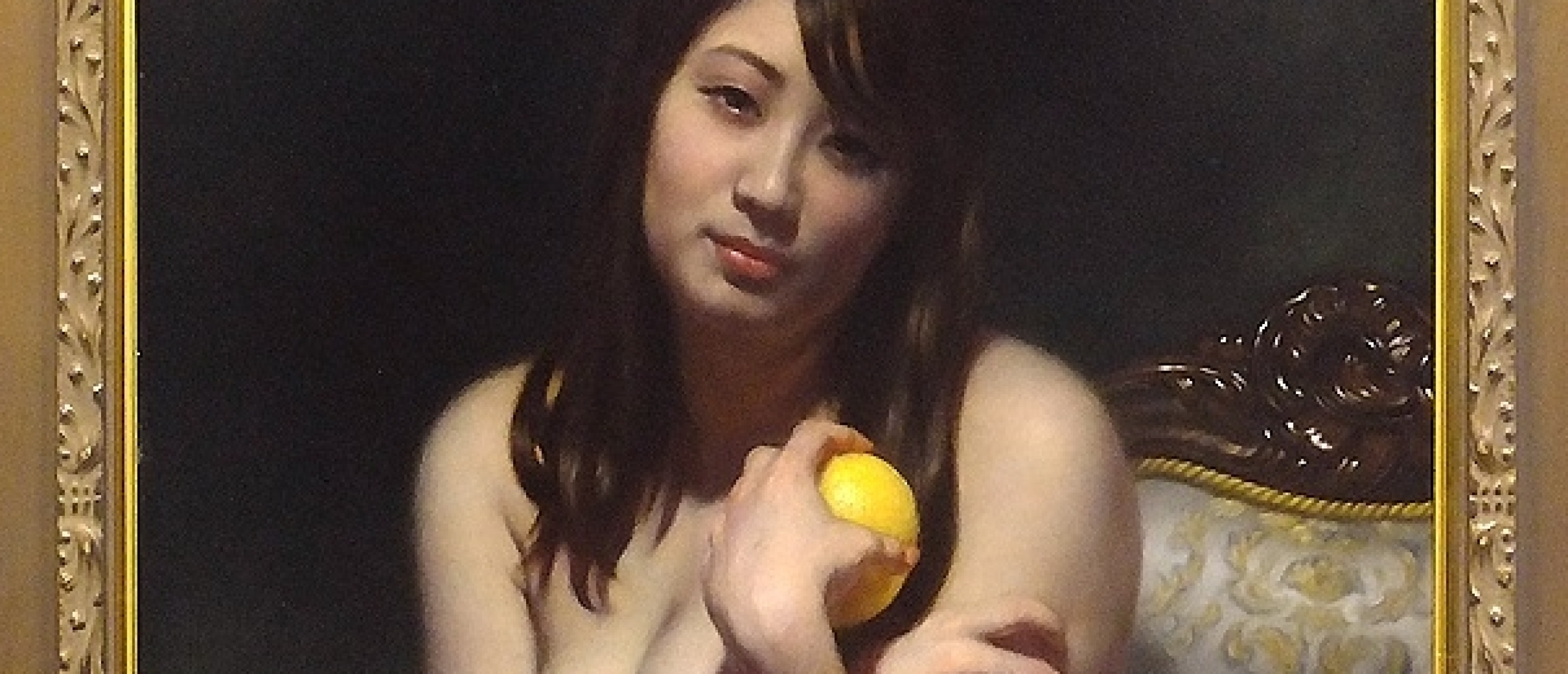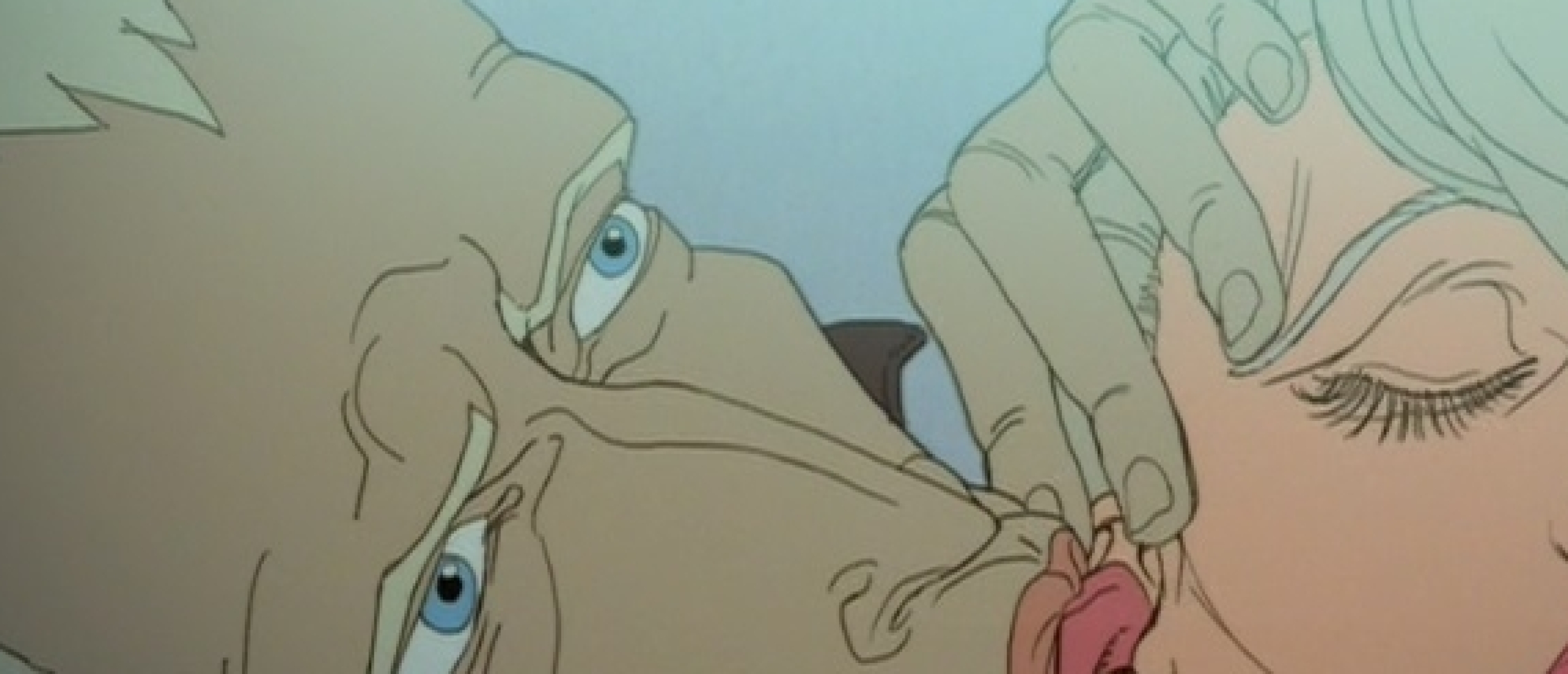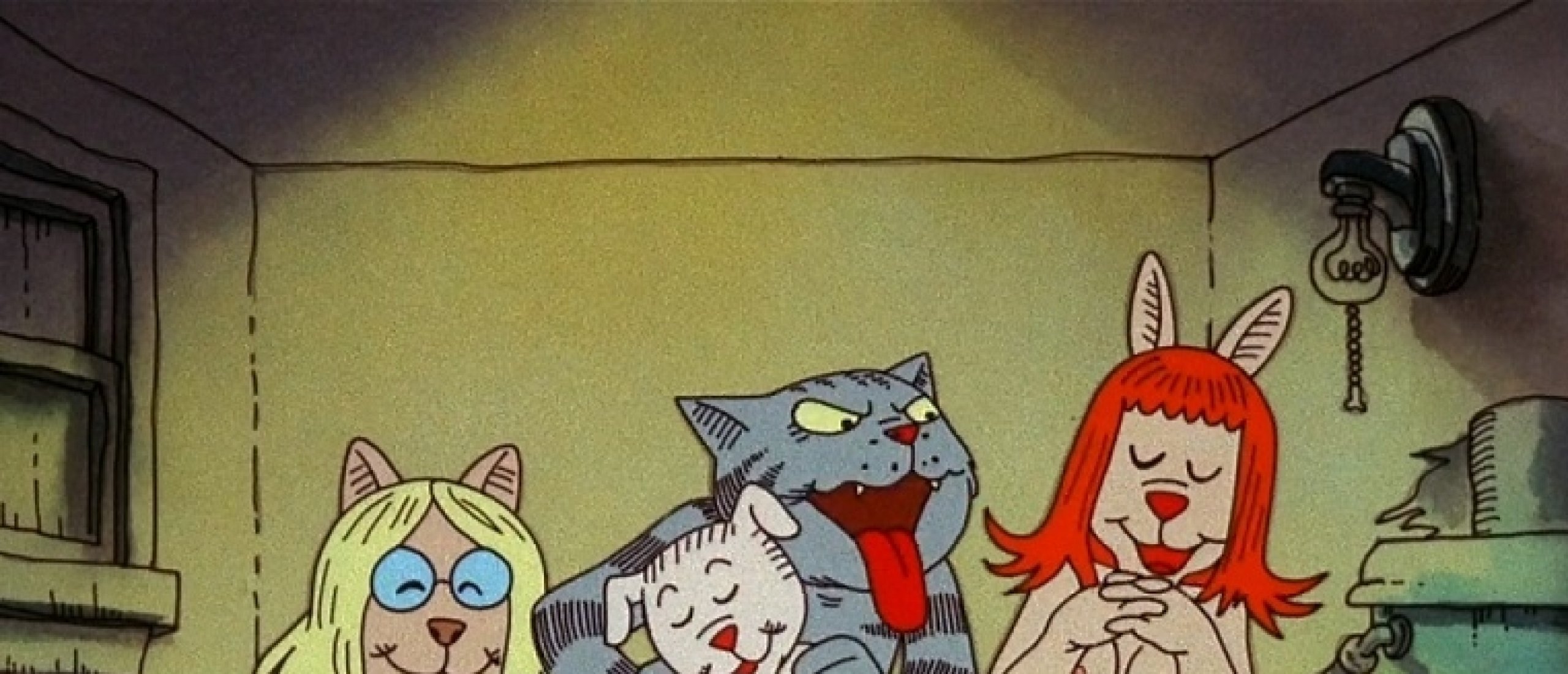
Fritz the Cat is a comic created by Robert Crumb, one of the pioneers of the underground in the United States. In 1959, Crumb published a story called "Cat Life", inspired by his family's pet cat Fred. Over time, the character evolved, gaining anthropomorphic traits in the story "Robin Hood" in 1960.. About anthropomorphization, Crumb said:
I can express something [with animals] that is different from what I put into my work about humans ... I can put more nonsense, more satire and fantasy into the animals ... they're also easier to do than people .. With people I try more for realism, which is probably why I'm generally better with animals. (Pahls, Marty (May 2003) [1996]. "Introduction: Right Up To The Edge". The Early Years of Bitter Struggle. The Complete Crumb Comics. Vol. 1 (third ed.. Fantagraphics Books.)
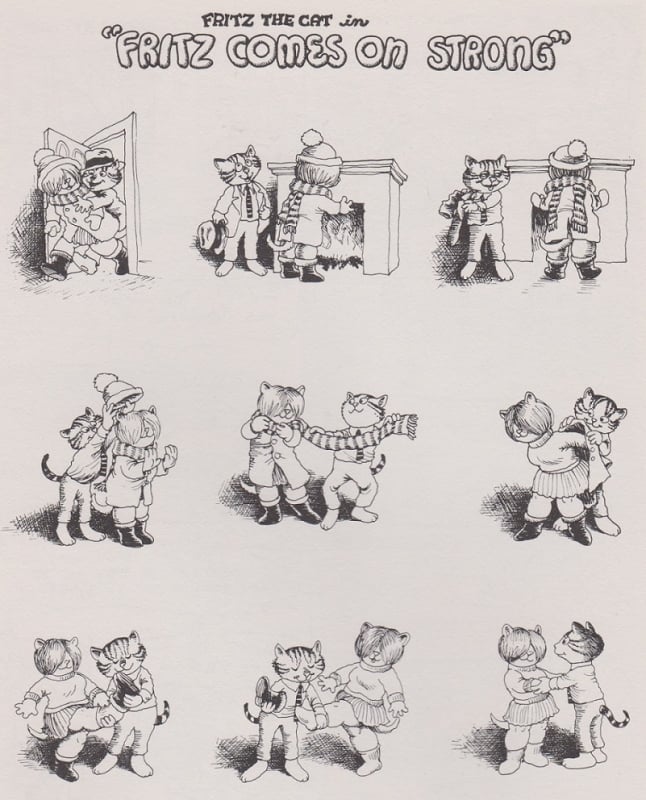
Fig.1.
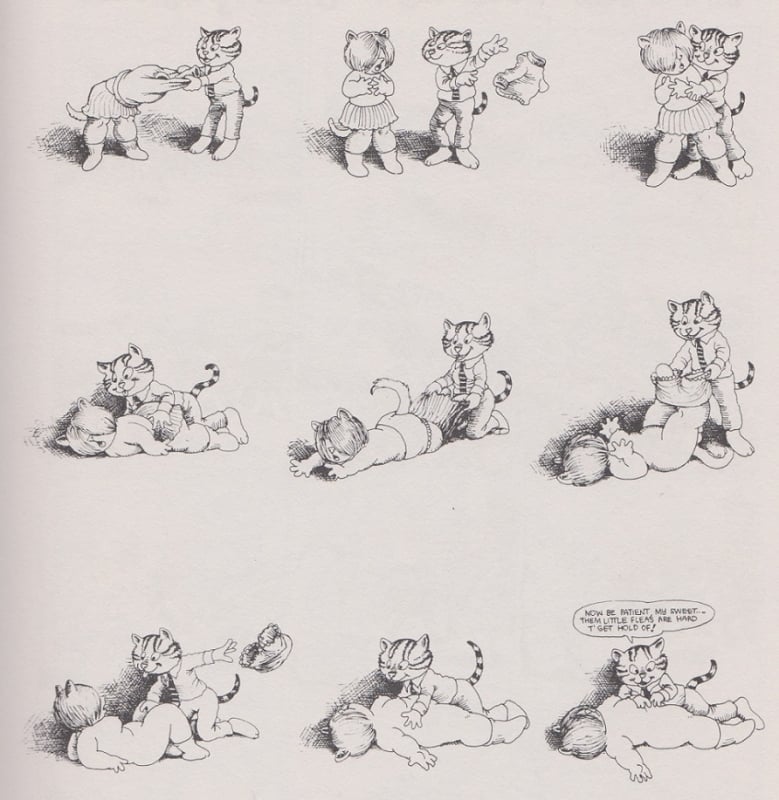
Fig.2.
Removing the Fleas
Help! magazine, edited by Harvey Kurtzman, former editor of Mad, ran two stories featuring Fritz. The first, entitled "Fritz Comes on Strong", was published in January 1965 and brought the character's first public appearance. In this story, Fritz takes a young cat to his home and undresses her before climbing on top of her and removing the fleas. Before publishing the story, Kurtzman sent Crumb a letter in which he said: "Dear R. Crumb, we think the little pussycat drawings you sent us were just great. Question is, how do we print them without going to jail?"
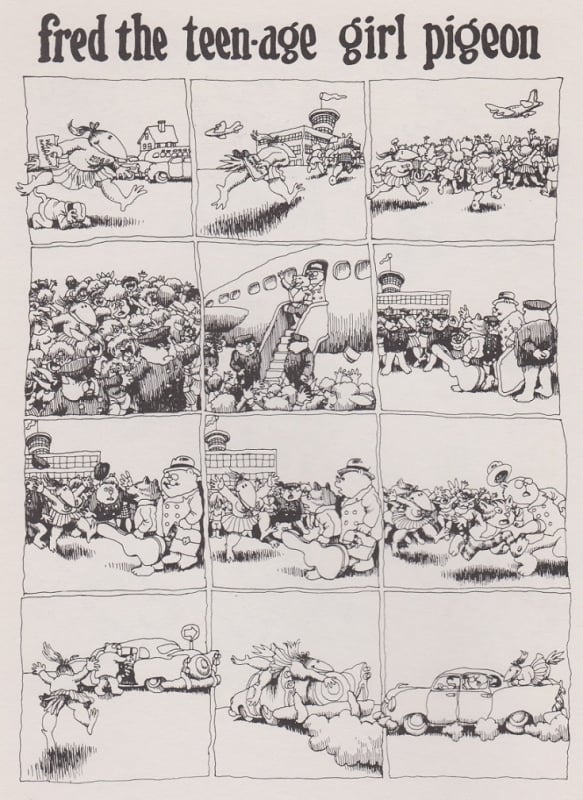
Fig.3.
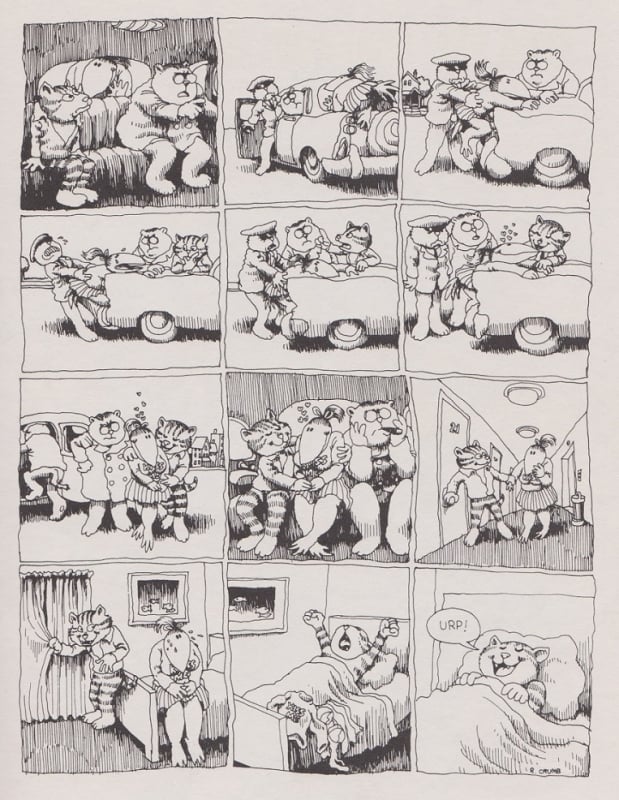
Fig.4.
Famous Guitarist
Although Kurtzman agreed to publish the story, he asked Crumb to make changes to the final two panels; so the published version had Fritz standing beside the cat. Crumb later recalled that the original ending "wasn't that dirty... only slightly risque by today's standards". In May 1965, Help! published Fritz's second story titled "Fred, the Teen-Age Girl Pigeon". In this narrative, Fritz is a famous guitarist who takes Fred, a pigeon groupie, to his hotel room, demonstrating intentions that he would have sex with her. However, at the end of the story, we find out that he actually couldn't resist his cat instincts and ate her.
Fritz caught the attention of animator Ralph Bakshi and producer Steve Krantz, who brought it to the screen in 1972. The film would become known for its bold and provocative approach to sexual issues and, mainly, for its satirical representation of hippie behavior in the 1960s.

Fig.5.
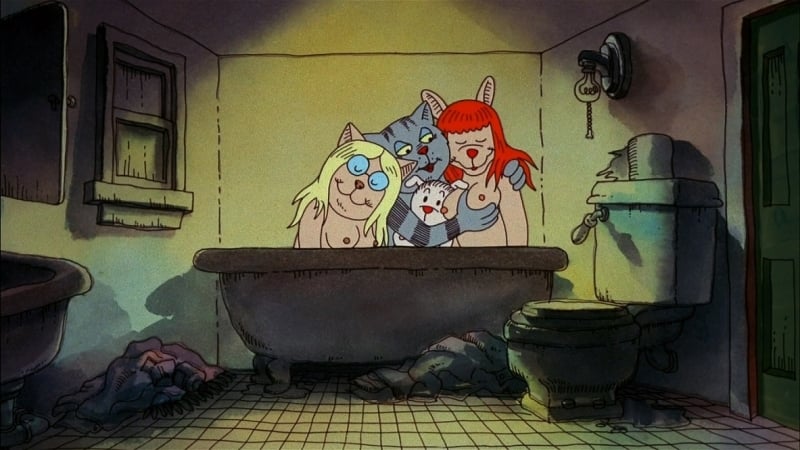
Fig.6.
Fritz the Cat: The Movie
In the 1960s, hippies gather at Washington Square Park in Manhattan to sing protest songs. Fritz the Cat and his friends join in, hoping to attract the attention of girls. However, their attempts are overshadowed when the girls show interest in a crow instead. Fritz manages to win the girls over by presenting himself as a troubled soul and invites them to a wild party. The party gets interrupted by the arrival of police officers, portrayed as pigs, but everyone hides in the bathroom. A chaotic scene ensues, with Fritz taking refuge in the toilet and eventually causing a flood. Fritz escapes and burns down his dormitory before embarking on a series of adventures. He incites a riot, witnesses the death of his crow friend, and joins a group of revolutionaries planning to blow up a power station. In the end, Fritz finds himself in a hospital where he unexpectedly revives and engages in a sexual encounter with multiple girls.
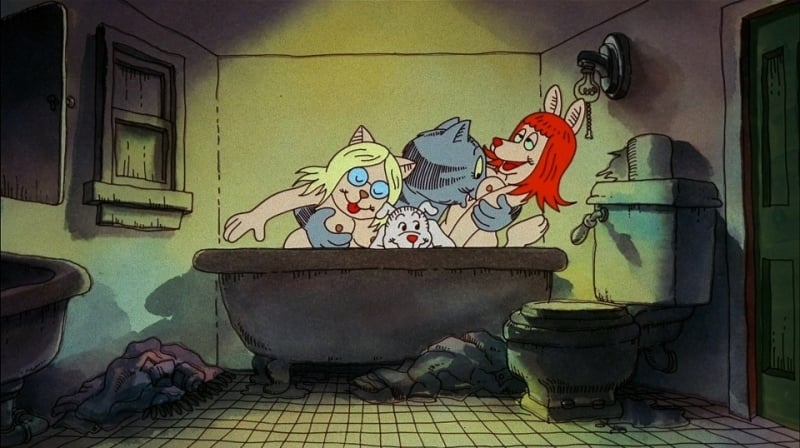
Fig.7.
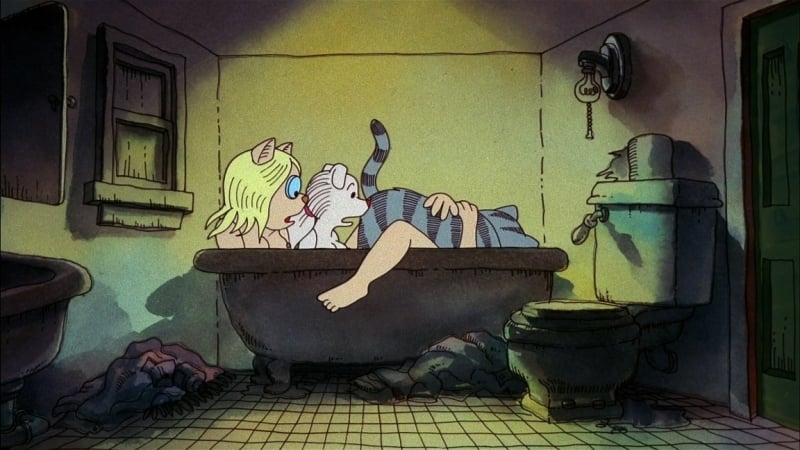
Fig.8.
Challenging Norms and Conventions
Fritz the Cat proved that animations didn't have to be aimed only at children, as long as they tackled adult themes with intelligence and daring. The fact that the characters in the film are all anthropomorphized animals is a return to fables in their classic conception, in which animals, by acting like human beings, point to flaws in society and to the vices of human behavior. Thus, unlike Disney animations, which opt for a pure fantasy world, Fritz the Cat challenges social norms by presenting sex scenes and dialogues on this subject, breaking barriers and going beyond the limits of what was considered acceptable in a time when censorship and conservatism dominated the film industry.
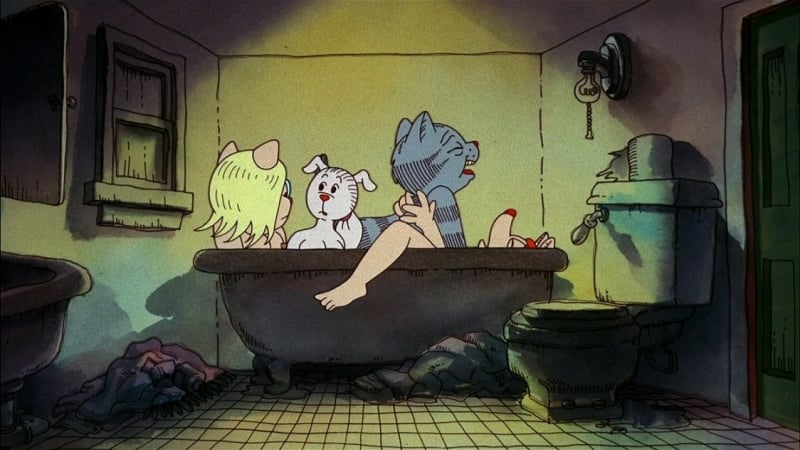
Fig.9.
Social Criticism and Sexual Liberation
Sexuality in animation was not only a provocative element, but also served as a social critique. Fritz the Cat explored the contradictions and hypocrisies of society at the time regarding sex. Through satirical characters and exaggerated situations, the film exposes sexual repression, moral norms and power structures that shaped individuals' sexual lives. Throughout the animation, we watch orgies and polygamous relationships practiced naturally, challenging social norms and opening space for discussions about sexual freedom. As in pornographic works, part of the viewers identified with these behaviors, as they saw on the screen their own desires repressed by a politically correct and hypocritical society.
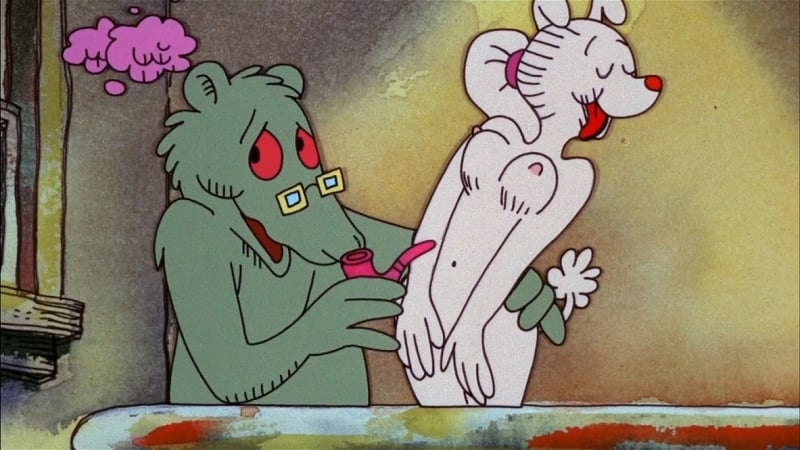
Fig.10.
In the extended Premium version of the "Fritz the Cat" article, how sexuality is used as a tool in the film, why it received an X-rating, why Robert Crumb was dissatisfied with certain aspects of the film, its important contributions to comic art, and animation, and many other images.
Click HERE for the Top 22 Comics from the issues of iconic Bizarre Sex Magazine

